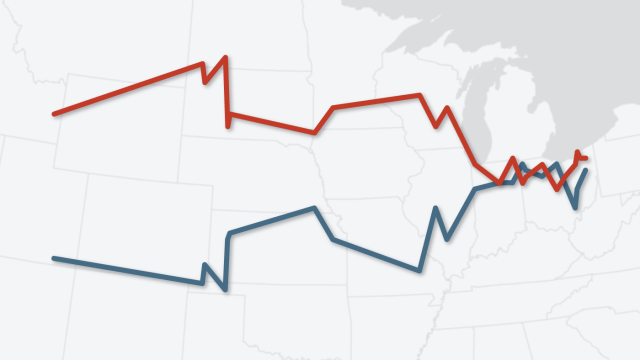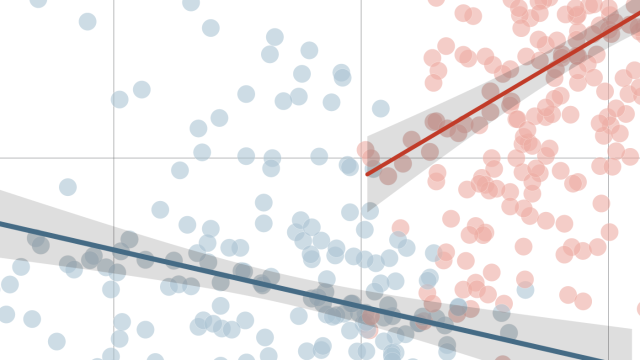
Numbers, Facts and Trends Shaping Your World

Most Americans Say They Are Tuned In to News About the Trump Administration
About seven-in-ten U.S. adults say they have been following news about the actions and initiatives of the Trump administration closely. Far fewer are hearing about the administration’s relationship with the media than was the case early in Trump’s first term.
Latest Publications
Most Popular
Politics & Policy

Americans Continue to View Several Economic Issues as Top National Problems
At the start of President Donald Trump’s second term, Americans see a host of economic issues, including inflation, as top problems facing the country.
Features
Economy & Work

U.S. Workers Are More Worried Than Hopeful About Future AI Use in the Workplace
American workers have mixed feelings about how AI technologies, like ChatGPT, will affect jobs in the future.

Americans Continue to View Several Economic Issues as Top National Problems
At the start of President Donald Trump’s second term, Americans see a host of economic issues, including inflation, as top problems facing the country.

Republicans think economy will improve over the next year, Democrats expect it to get worse
About three-quarters of Republicans (73%) expect the economy to be better a year into President Donald Trump’s second term, while 64% of Democrats say it’ll be worse.

A look at Black-owned businesses in the U.S.
While Black-owned businesses have grown significantly in the U.S. in recent years, they still make up a small share of overall firms and revenue.
Gender & LGBTQ

Gender pay gap in U.S. has narrowed slightly over 2 decades
In 2024, women earned an average of 85% of what men earned, according to an analysis of median hourly earnings of both full- and part-time workers.

Americans have grown more supportive of restrictions for trans people in recent years
Two-thirds of U.S. adults favor laws and policies that require trans athletes to compete on teams that match their sex assigned at birth.

U.S. teens are less likely than adults to know a trans person, more likely to know someone who’s nonbinary
Fewer than four-in-ten teens (36%) say they know someone who’s transgender, and 28% know someone who’s nonbinary.

Men, Women and Social Connections
While experiences with loneliness don’t differ much by gender, men seem to turn to their networks less often for connection and emotional support.
Social Media

5 facts about Americans and YouTube
Here are five key findings about YouTube from our research to mark its 20th anniversary.

No consensus on who comes to mind when Americans are asked to name a news influencer
In an open-ended question, we asked U.S. adults who say they regularly get news from news influencers to name the first one who comes to mind for them.

What we know about TikTok content creators
On TikTok, Americans often follow people who have a strong social media presence. These creator accounts make up about half of all accounts that U.S. users follow.

How news influencers talked about Trump and Harris during the 2024 election
Most news influencers published posts about both candidates in summer and fall, and identical shares were more critical than supportive of each.

Teens, Social Media and Technology 2024
Nearly half of U.S. teens (46%) say they’re on the internet almost constantly. YouTube, TikTok, Instagram and Snapchat remain widely used by teens.
Our Methods

U.S. Surveys
Pew Research Center has deep roots in U.S. public opinion research. Launched as a project focused primarily on U.S. policy and politics in the early 1990s, the Center has grown over time to study a wide range of topics vital to explaining America to itself and to the world.

International Surveys
Pew Research Center regularly conducts public opinion surveys in countries outside the United States as part of its ongoing exploration of attitudes, values and behaviors around the globe.

Data Science
Pew Research Center’s Data Labs uses computational methods to complement and expand on the Center’s existing research agenda.

Demographic Research
Pew Research Center tracks social, demographic and economic trends, both domestically and internationally.

Decoded
Pew Research Center tracks social, demographic and economic trends, both domestically and internationally.
Our Experts
“A record 23 million Asian Americans trace their roots to more than 20 countries … and the U.S. Asian population is projected to reach 46 million by 2060.”

Neil G. Ruiz,
Head of New Research Initiatives
Methods 101 Videos

Methods 101: Random Sampling
The first video in Pew Research Center’s Methods 101 series helps explain random sampling – a concept that lies at the heart of all probability-based survey research – and why it’s important.
Signature Reports

Decline of Christianity in the U.S. Has Slowed, May Have Leveled Off
America’s News Influencers
Race and LGBTQ Issues in K-12 Schools
Representative Democracy Remains a Popular Ideal, but People Around the World Are Critical of How It’s Working
Americans’ Dismal Views of the Nation’s Politics
Measuring Religion in China
Editor’s Pick

5 Years Later: America Looks Back at the Impact of COVID-19
How Americans view Elon Musk and Mark Zuckerberg
Biden granted more acts of clemency than any prior president
Faith on the Hill
Many Americans perceive a rise in dangerous driving; 78% see cellphone distraction as major problem
7 facts about Germany’s AfD party
Immigration & Migration

How Americans feel about making English the official language of the U.S.
What we know about the U.S. H-1B visa program
Trump’s executive order on birthright citizenship draws more disapproval than approval
What Americans think about Trump’s immigration actions early in his second term
Key facts about the U.S. Black population
International Affairs



















